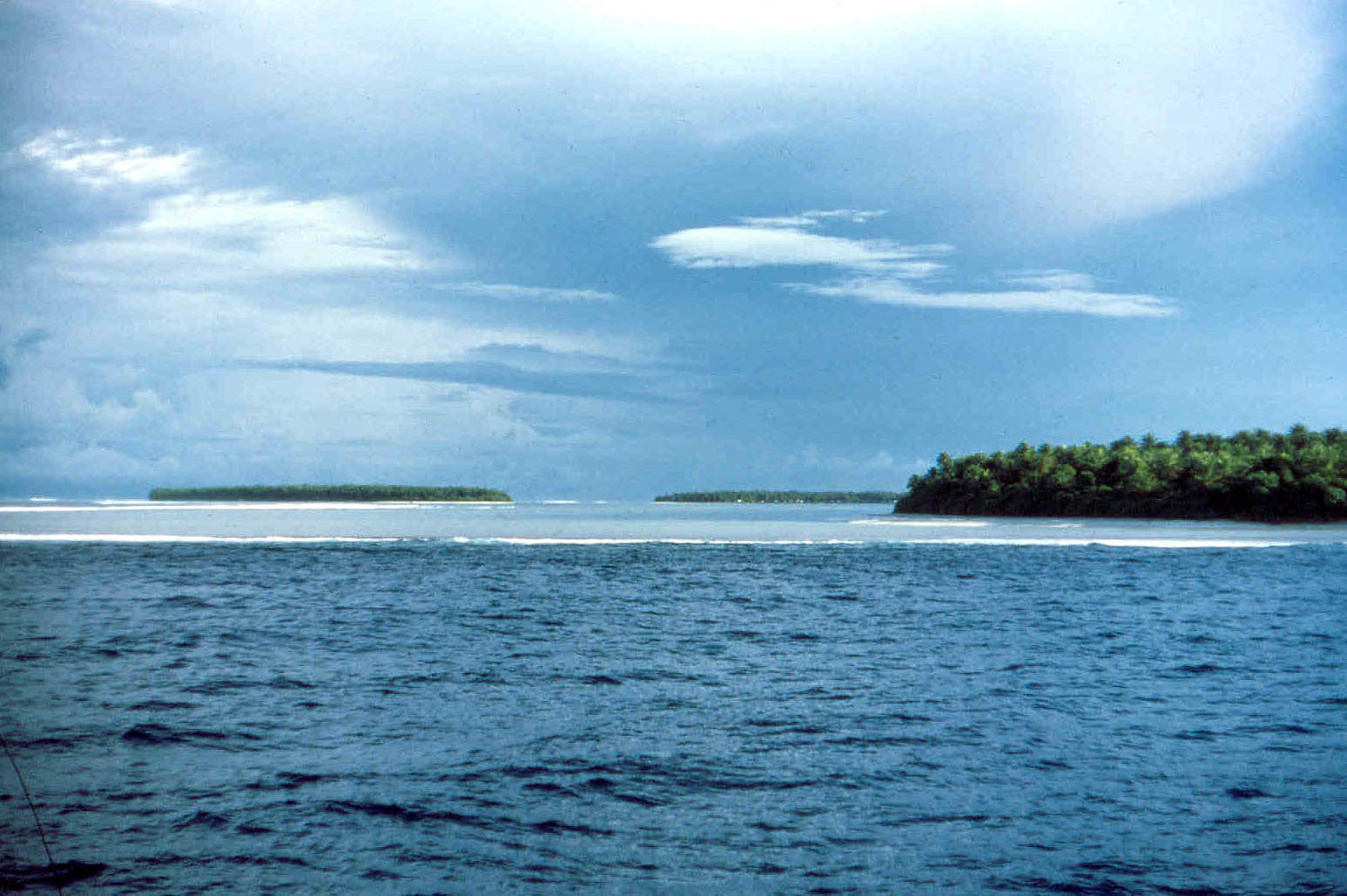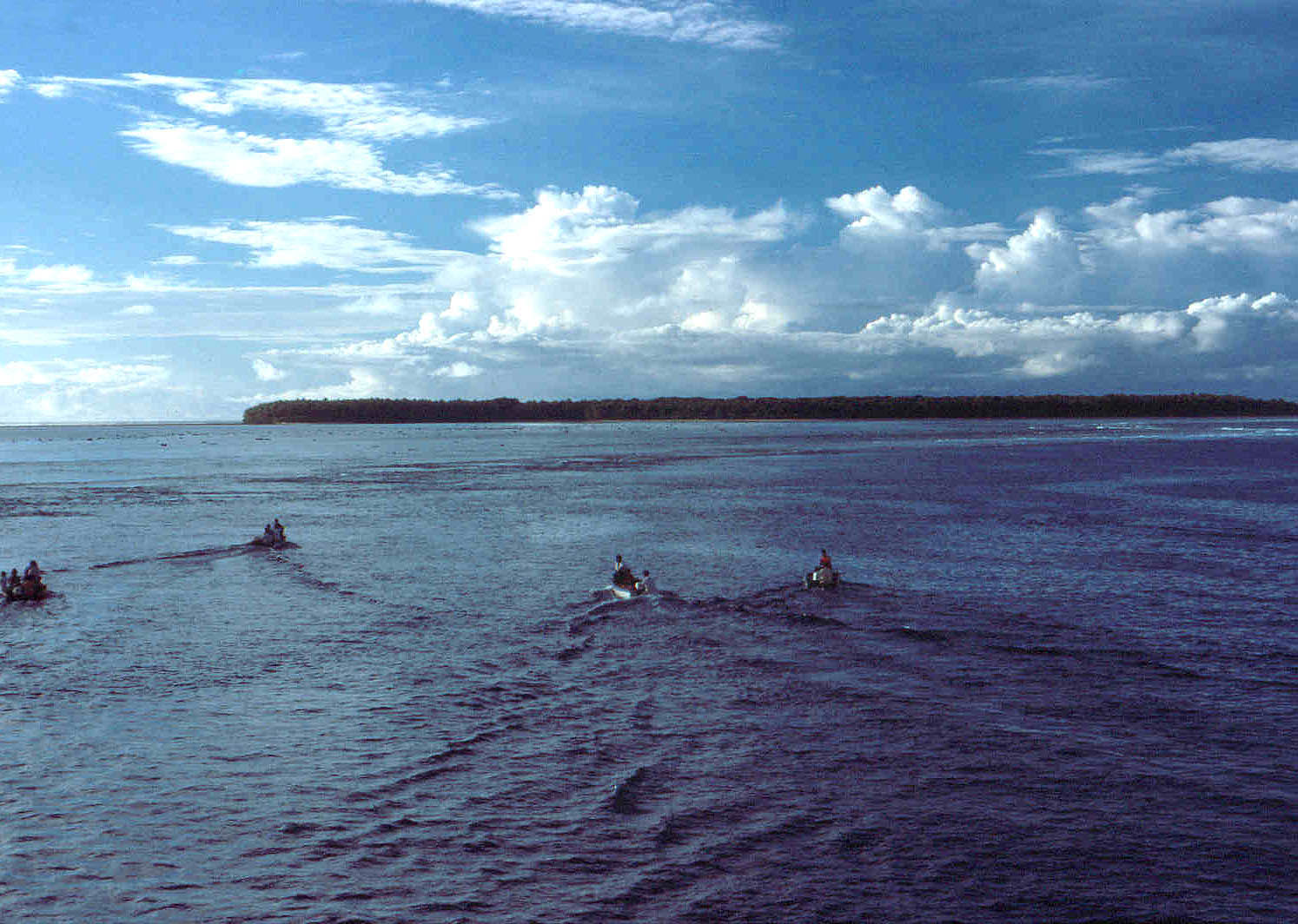LYNN'S ACCOUNT OF LIVING ON KOSRAE IN MICRONESIA, 1969-1975, p.2
Early the next day we wobbled to our feet to the sounds of shouting in an unfamiliar language. We were in a small harbor surrounded by Pohnpeians in canoes and outboard motor boats.
 Arrival at Wene
Arrival at Wene
We had sailed directly to the undeveloped south coast of Pohnpei, where we would spend the summer in training. This training was primarily language training, which we endured for 8 hours a day. The program was conducted in a little collection of hamlets in the rain forest, in an area known as Wene, far from Kolonia, the then district center town aptly named during the Spanish Colonial period. At that time the only practical way to get to Kolonia was by boat. We lived with a Pohnpeian family, bathed in a stream (avoiding the eels), and ate communal meals with the rest of the Peace Corps volunteers in an open-sided community building that was part of the local Catholic mission center. By the time of our first trip to Kolonia, on the north coast, the rusting Quonset huts and crumbling building of the district center would look like civilization.
 Area Map
Area Map
 Our residence in Wene
Our residence in Wene
 Mary and Sedin, our hosts
Mary and Sedin, our hosts
 Kolonia, Pohnpei
Kolonia, Pohnpei
When the training was over in the late summer, we took a two-day ocean voyage to Kosrae, where we would spend most of the next two years of our lives. Kosrae Island was even more isolated in that no planes went there at that time. Pohnpei at least had seaplane service when we first went there and completed an airstrip in 1970, during our first year on Kosrae.
However, Pohnpei was still very traditional compared to Kosrae. Except for Kolonia and a few villages occupied by former inhabitants of outlying atolls, the settlement pattern was one of isolated homesteads in the jungle. Women (and men) were generally topless around their houses; and chiefs, feasting, traditional titles, and sakau (kava root) were important parts of the social world. On Kosrae (then officially known as Kusaie), everyone wore European clothes only slightly modified from what the missionaries had introduced in the 19th century. Noble titles and kava drinking had long been abandoned in favor of seeking status within the local Christian church. Large feasts were still an important part of the local life, but usually within the context of church celebrations, weddings and funerals and not as a kind of competition to win higher titles and power.

On the boat Kaselehlia from Pohnpei to Kosrae
 Mokil Atoll
Mokil Atoll
The trip from Pohnpei to Kosrae, usually included stops at the two small atolls of Pingelap and Mokil. From the Ocean, atolls looks like a hedges barely above the surface of the water. When you get closer you see the “hedges” are really the tops of coconut trees, but the islets are still so low and narrow that you are always within the sound and usually within sight of the ocean.
 Pingelap Atoll
Pingelap Atoll
There were three more inhabited atolls south of Pohnpei including two populated by Polynesian peoples, and the volunteers assigned to those islands would be having a truly exotic Peace Corps experience. We enjoyed visiting the atolls, but were glad that we were assigned to a larger high island with some other volunteers and a little more variety in the terrain.
 First
View of Kosrae
First
View of Kosrae